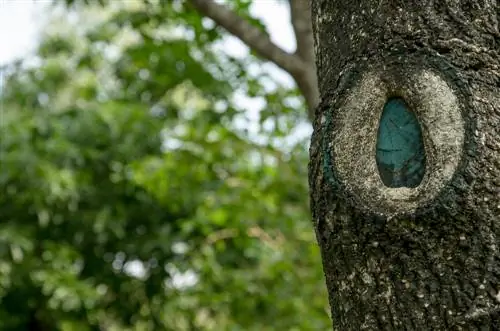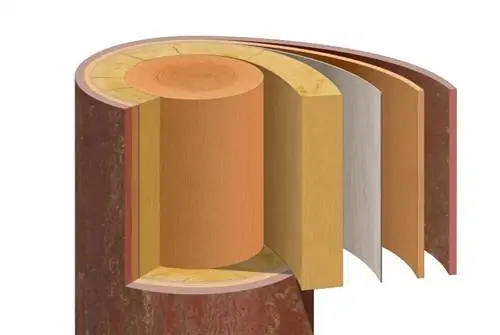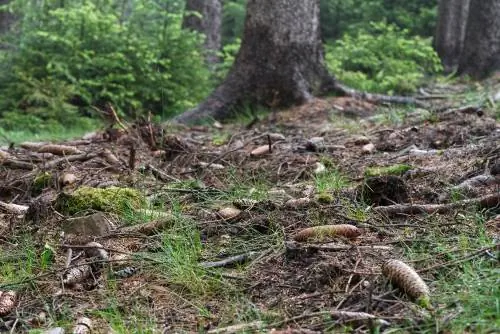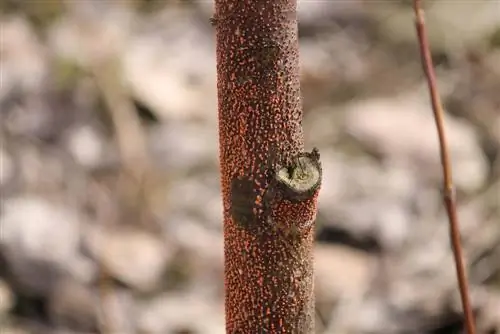- Author admin [email protected].
- Public 2023-12-16 16:46.
- Last modified 2025-01-23 11:21.
Spruces are very decorative trees for the garden, especially when young. Later, the lower branches often become bare or incorrect care leads to various diseases or pest infestation. The attractiveness of the spruce is then lost.
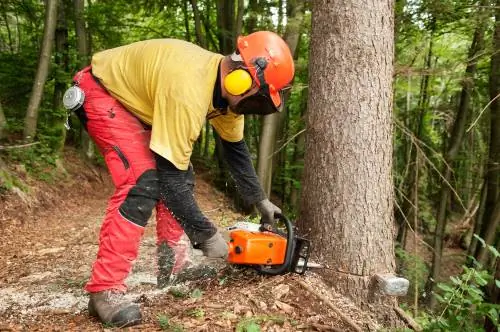
What is red rot in spruce trees and how can it be treated?
Red rot in spruce trees is caused by fungal infestation and leads to red discoloration in the wood. There are two types: wound rot occurs due to bark injuries, core rot affects the entire wood core. Preventive measures include wound closure products, root canal preparations and pruning measures outside of autumn.
What exactly is red rot?
Red rot is a fungal infection that causes red discoloration of the spruce wood. This disease can be caused by different pathogens and have different forms. A distinction is made between wound rot, often a result of bark injuries, and core rot, caused by root rot.
How do I treat wound rot?
In wound rot, the very sensitive bark of the spruce is injured, and spores of the bleeding layer fungus enter the trunk through this wound. However, this type of red rot does not spread very far through the wood. A wound closure agent (€17.00 on Amazon) that you apply to the cut immediately after any cutting measures is helpful. As a rule, there is no need to worry about infection of nearby spruce trees.
What can I do against root rot?
Root rot is far more dangerous for your spruce than wound rot because it spreads quickly throughout the entire heartwood of the trunk. The pathogen often enters the wood through the stump of a freshly cut spruce and spreads to neighboring he althy trees via root contact. There it spreads from the roots practically invisibly from the outside into the heartwood.
There is practically nothing you can do about core rot on an infected spruce tree. The tree should be felled as quickly as possible, as it becomes increasingly unstable and susceptible to wind. To protect neighboring spruce trees from infestation, the root stalks can be treated with a special preparation when felling.
However, felling at a time when the pathogen is not active or the number of spores is low is more effective and requires no chemicals. Older root stems can no longer be attacked by the fungus.
The most important things in brief:
- Cause: fungal infection
- various pathogens
- Wound rot usually limited to a certain area
- Core rot can affect the entire wood core
Tip
In early autumn, spruce trees are particularly susceptible to the dreaded core rot. Therefore, avoid cutting measures during this period.



